The first thing to do when you want to buy a rabbit is to determine your preferred color. Rabbits’ colors vary. The grey color is a seal of maturity and protection. When you want to buy a grey rabbit, here are the seven grey rabbit breeds you can choose from.
1. Flemish Giant
The Flemish Giants rabbit breeds are attractive because of their almost smoky-colored furs. However, these cuddly giants are less common in grey.
Flemish giant rabbits are famous because of their large sizes. They usually weigh up to 15 to 20 pounds. The length of their body can reach up to 2.5 feet.
These rabbits have semi-arched posture. They have a good body, large heads, upright ears, rounded backsides, and equal colored coats.
Their shiny furs are in different colors: white, blue, sandy, black, fawn, steel gray, and light gray. Compared to females, males have wider heads. Does also have dewlaps to keep their young warm.
Although docile, these rabbits are known for their natural survival instincts. They have good eyesight and hearing, which keep them alert to threats. They are much valued for their fur and meat.
This breed is gentle, friendly, and obedient. It can be litter-trained by using the litter box. Because it is friendly, it is a great companion and a lovely family pet. Sitting on its owner’s lap is natural for this cute bunny.
Their diet is similar to other rabbit breeds. They need more food because of their large size. The amount of hay consumed should be 70% of their diet. They need a 30% mixture of pellets, vegetables, leafy greens, and fruits.
The Flemish giant rabbit cage can be indoor or outdoor. The cage must be larger than its size. It has to lie down and stretch well. Make sure that you let it play outside.
But you have to check the temperature first. When the weather is at 70 degrees Fahrenheit, it can be dangerous for them to stay out.
2. Lilac Rabbit
Lilac rabbits have large, erect ears that can grow up to 3.5 to 4 inches long. They weigh about 5.5 to 7.9 pounds, approximately. The white fur under their feet and their light-colored blue-gray eyes are noticeable.
Their legs are short and straight, while their backsides are wide. Unlike other giant rabbits, these bunnies’ heads are small.
These rabbits are known for their strange furs. The colors of their coats change under natural and artificial light. Lilac rabbits usually appear purple in the light. In the light room, they show light gray.
It depends on the type of light whether their furs will turn more purple or grayer. With their gray-lilac coat, they never show more than one color.
The fur of the lilac rabbit is short and soft to touch. Because of this, too much grooming is not necessary. But if you keep brushing them, it will keep the coat smooth and soft. A female lilac rabbit has a dewlap larger than a male lilac rabbit.
Their diet is like any other rabbit breed that requires 70 % good-quality hay, such as timothy hay. Many types of pellets are high in protein content and hay.
You can also feed your rabbit with leafy greens that are nutrient-rich and high in fiber. But not all the leafy greens are safe. Avoid fruits that are high in sugar.
Lilac rabbits have a life expectancy up to 9 to 12 years. Yet how long they live will depend on their diet and the type of care they receive. Lilac rabbits are friendly and gentle, making them good companions.
The breed requires a large cage to move freely and exercise with comfort. Cleaning the bedding once a week is also a must.
3. French Angora
A French Angora rabbit’s body is solid and muscular, ideal for commercial purposes. Their body is almost completely covered in coarse guard hair curled in the lower layer of the coat.
These bunnies may have a tuft on their hind legs. The French Angora rabbit breed was for meat and wool production.
They have a list of coat colors and markings. White, black, blue, chocolate and lilac are some of them. The agouti group includes chestnut, chocolate, copper, lynx, and opal. Chinchillas, chocolate chinchillas, lilac chinchillas, and squirrels are included in the chinchilla group.
These lovely bunnies are good pets. They are known for their sweet, obedient, and friendly personalities. Like any other rabbits, they require attention, love, and care.
You can put a litter in a familiar area for rabbits. It is enough for them to decide where to urinate or excrete the proper place.
When exposed to other humans, they know how to befriend strangers. Putting toys in their cages is recommended since they love to gnaw on toys.
If you fail to give them something to chew, they may gnaw at plastics and wires in their cages. All pets need a longer time outside of cages to play and bond with their human owners. It helps so that they become more friendly.
French Angoras should eat approximately 70% of good-quality hay. Providing them with vegetables, fruits, leafy greens, and pellets is essential. It is better to go to the vet to consult about your rabbit pet’s specific diet as they become older.
When it comes to maintaining their bedding, they are low-maintenance. They don’t also need much attention when it comes to coat care. Their coats, known as wool, are covert clothing. It needs cleaning every day or once a week.
4. English Lop
The English Lop is popular for its unique features. Some of these are its dangling, large ears. It also has a behavior that most rabbit owners adore.
The breed colors include black, agouti, grey, orange, black torts, and red-eyed-white. They also come in solid and broken colors. They have huge ears, hanging beside their faces.
You will also notice their mandolin-shaped body. Plus, they have massive eyes. Their front feet must not be bandy, and their tail must be straight.
Many love these English Lops because they are energetic, curious, calm, and easy-going. They are also gentle creatures that are willing to be held and cuddled.
With their friendly personality, they fit for homes as family pets. Spending quality time with the human owners is also a fun activity for them.
Because of its flyback fur, this breed is easy to maintain. It does not always need grooming because they can do it themselves. This breed is uncomfortable with water.
As much as possible, never bathe this bunny because it can cause a cardiac arrest. You can use a damp towel to wipe its coat.
With their enthusiasm, you have to take an English lop out of its cage every day. Aside from that, it requires a huge area where it can exercise. Plus, it needs to jump around during its playtime.
Because of its big ears, one of the common diseases experienced by this breed is ear mites. You must take this bunny to the vet for examination.
Regular grooming such as the trimming of the nails is also necessary. It will prevent the bunny from scratching and wounding itself. As for its diet, you only have to ensure that they are getting enough hay every day. Vegetables and fruits are also important in its diet.
5. Dutch Rabbit
The Dutch rabbit is the most well-known and oldest rabbit breed globally. They have a strange appearance. The bodies of the Dutch are dense and round, while their ears are short.
These rabbits’ heads are round, their front legs are short, and their hind legs are powerful. They are a small-sized breed, weighing about 4 to 5.5 pounds. However, they are not a dwarf breed.
These rabbits’ colors are brown-gray, steel, chocolate, blue tortoise, black, yellow, and harlequin. Harlequin is not accepted as the standard color.
They are intelligent little rabbits with gentle and obedient personalities. They make excellent pets since they are easy to learn and train.
Being gentle, they can be pets for children as long as they are handled with care. They are also excellent pets for seniors, couples, and even single people.
This rabbit breed needs to be out of the cage once in a while. It can experience boredom and depression if it is not given enough time to play outside its cage. Aside from that, this bunny requires a rabbit companion to prevent depression.
For a healthy lifestyle, the diet of this breed should consist of 70% hay. Chewing hay will also prevent them from having overgrown teeth. It is also recommended that you feed them vegetables and leafy greens.
As for fruits, avoid any that are high in sugar content. They must also be given in a small amount.
Consult the vet about their food, like what vegetables and fruits they should eat. Not all vegetables and fruits are proper for them. In fact, they can harm them. Pellets are also essential for their diet. Providing fresh water daily is also vital.
6. French Lop Rabbit
The French Lop Rabbit came from the English Lop and the Flemish Giant Rabbit breeds. This breed is initially developed for meat making.
With its large body, It is suitable for commercial rabbit farming. They are also ideal for show pets because of their dense and soft in their coats.
French Lops and the Flemish Giants are almost the same. However, French Lops are heavier and have shorter bodies. Their approximate body weight is about 8.8 to 12.1 pounds.
Their pendant-looking ears can reach up to 5 to 8 inches. These bunnies can live up to 5 to7 years, depending on how you care for them.
They have short and straight front legs, with their hind legs the same length as their bodies. French Lop has different colors such as grey, brown, white, black, blue, opal, fawn, steel, and cream brown.
They are gentle, devoted, playful, and docile. These rabbits love to be cuddled. When you socialize with them at a younger age, they will follow you. They make great pets because of their personalities. Single people, couples, families, or seniors will love them.
When it comes to their diet, they need to eat hay that is large as their bodies. Giving them a handful of leafy greens twice a day is also advisable. You can also add commercial rabbit nuggets to their diet.
7. Holland Lop
Because of its cuteness, the Holland Lop is acclaimed to be one of the most famous rabbits in the United States. Their adorable faces melt the hearts of many rabbit owners.
They have small, lopped ears. Their weight will not reach more than 4 pounds, and they have an average length.
The quality body required for this breed is the dense type that is massive, thick, and short. It is the ideal size for the head, ears, and fur.
This breed is available in different colors. The self-group colors are blue-eyed white, ruby-eyed white, lilac, chocolate, and black.
The agouti group includes opal, squirrel, lynx, chinchilla, chocolate chinchilla, chocolate, and chestnut. The broken group consists of colors mixed with shaded white, pointed white, and white.
The ticked group includes lilac, blue, chocolate, steel black, and gold or silver-tipped. Frosty, tricolors, orange, red, cream, and fawn belong to the group of wide bands.
Holland lops have very friendly personalities, especially the male Holland Lops. They are easy-going rabbits that are easy to handle. For the bucks, they want to get out of their cages more often.
They are looking forward to their owners picking them up. Circling their owner’s feet is one way of getting some attention.
For their diet, give them enough hay. Add some veggies and fruits for variations.
Summary
Grey rabbits have lovely and sophisticated furs. Aside from their coats, most of them have good personalities, making them ideal pets. They also don’t require too much grooming.
However, like other domesticated rabbits, they require proper care and attention. You can choose from the seven grey rabbit breeds mentioned above.
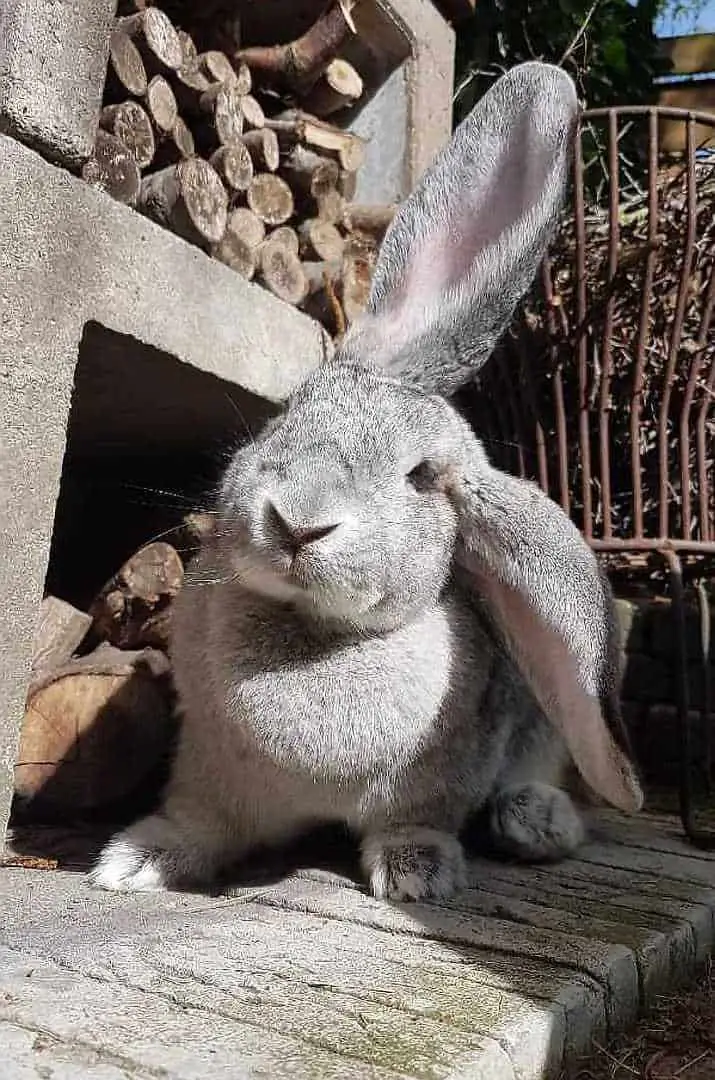

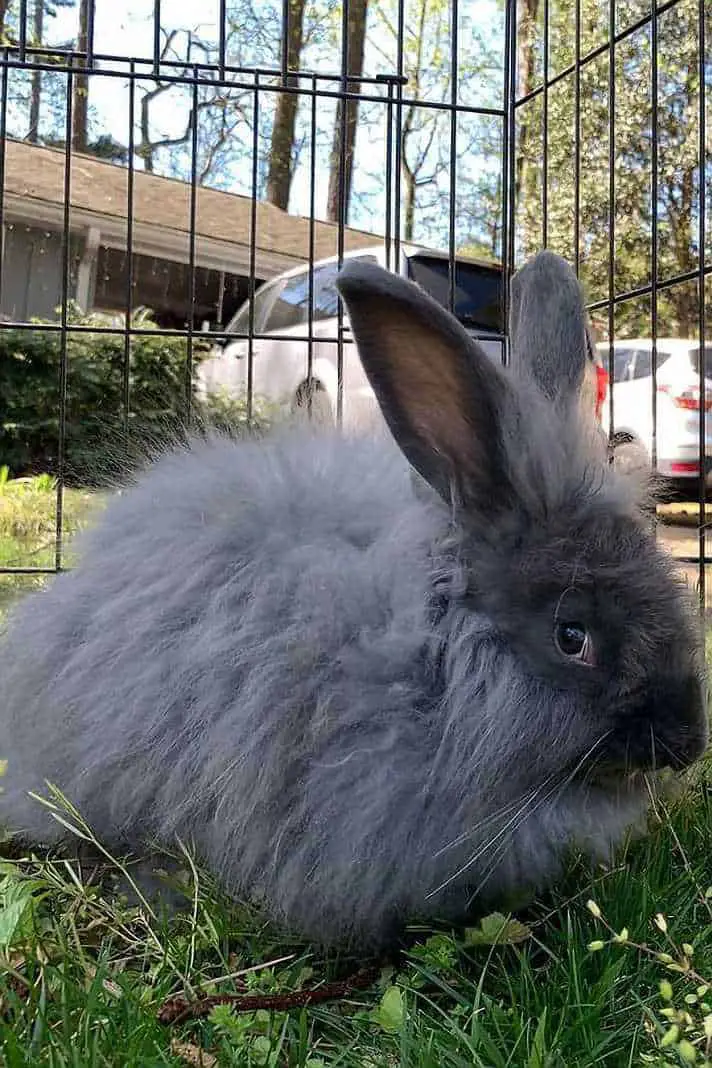
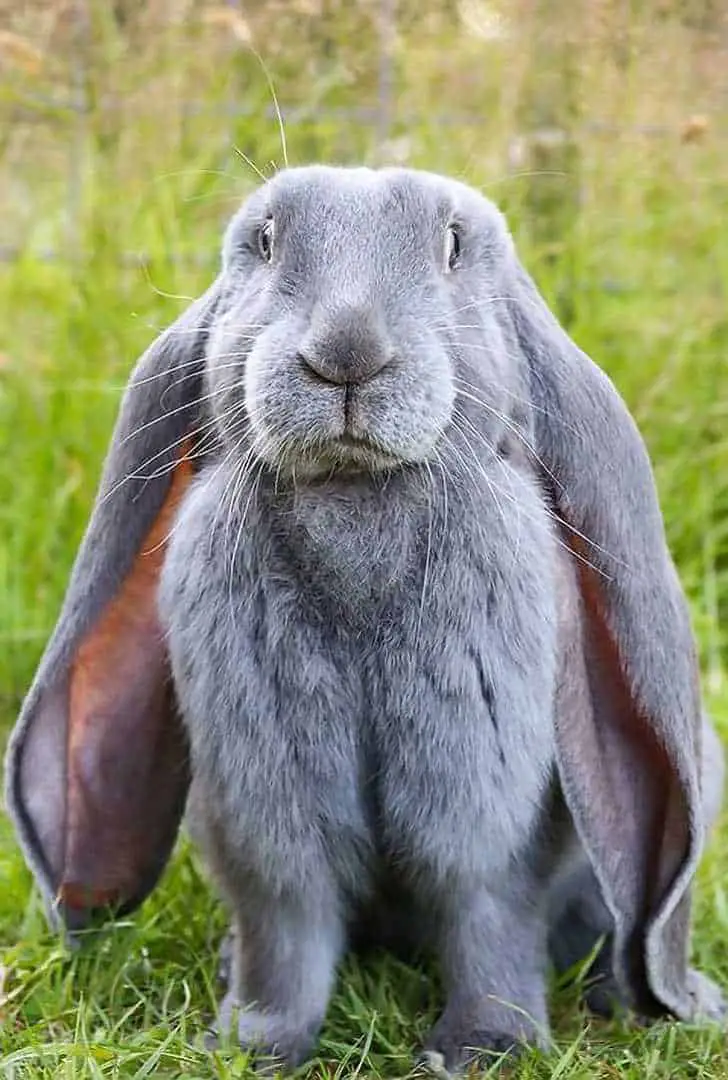
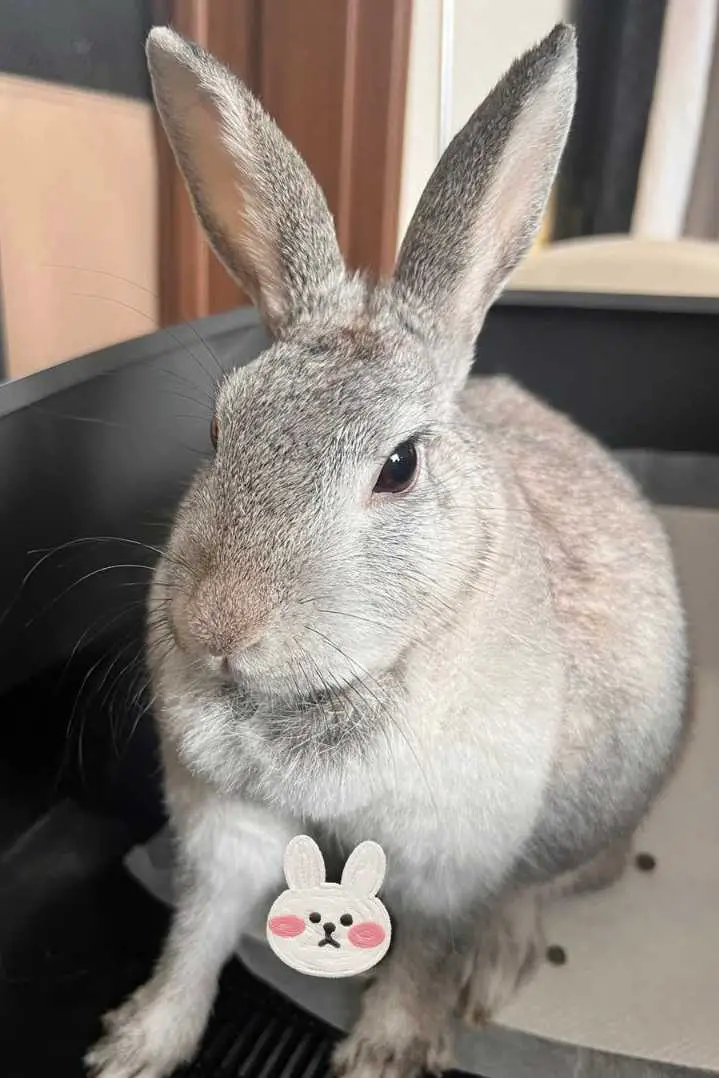
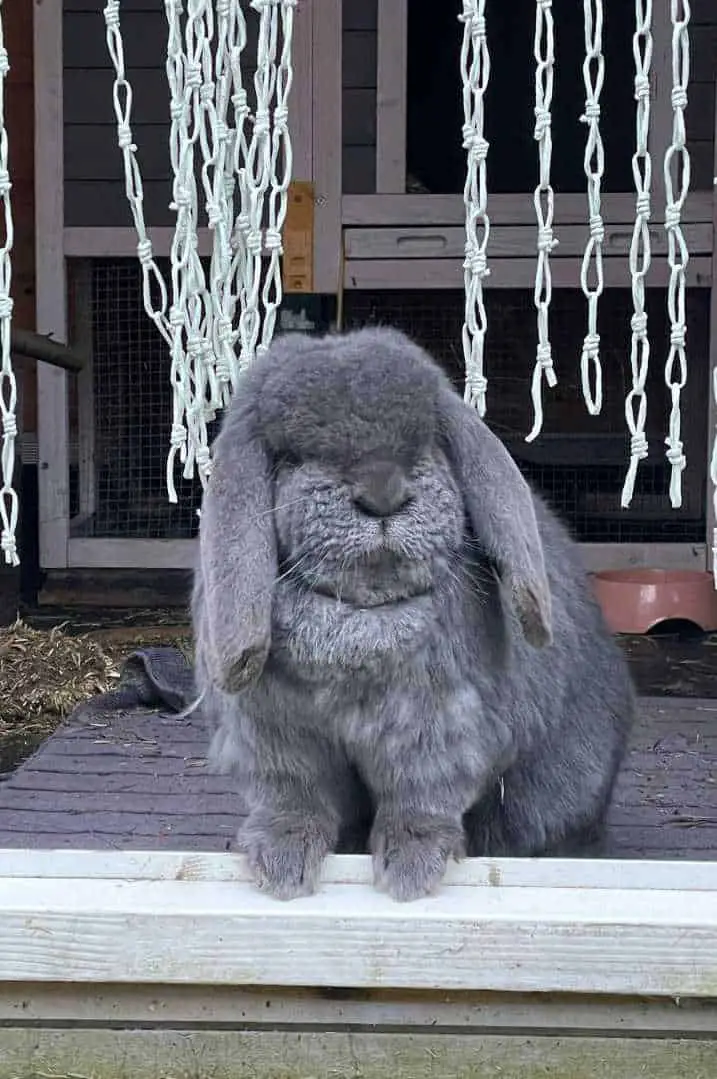
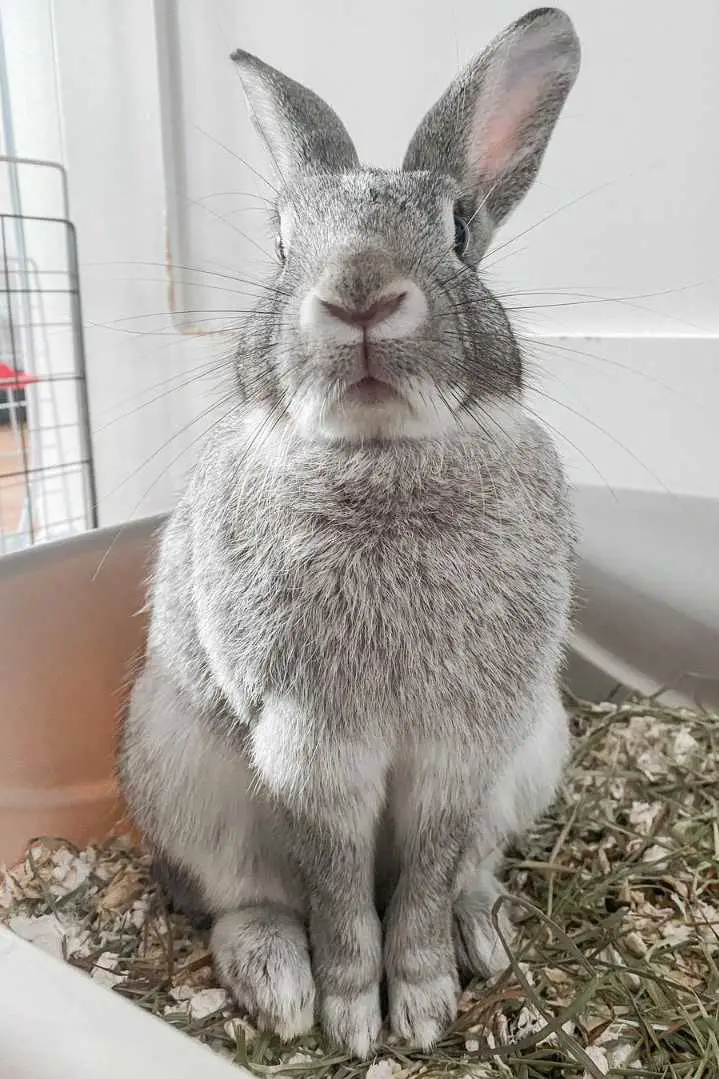
I wold like to get more information on Flemish giant and English. Where are you located?
here are they:
Flemish Giant Rabbit
English Angora Rabbit